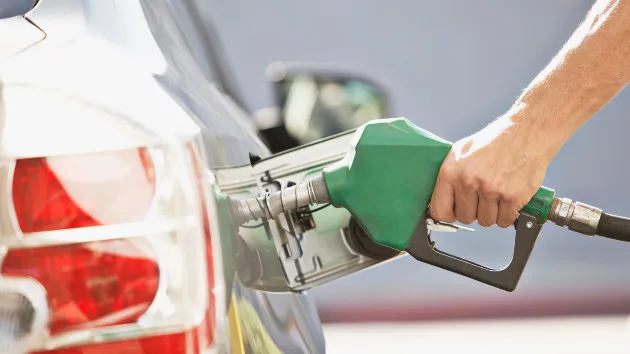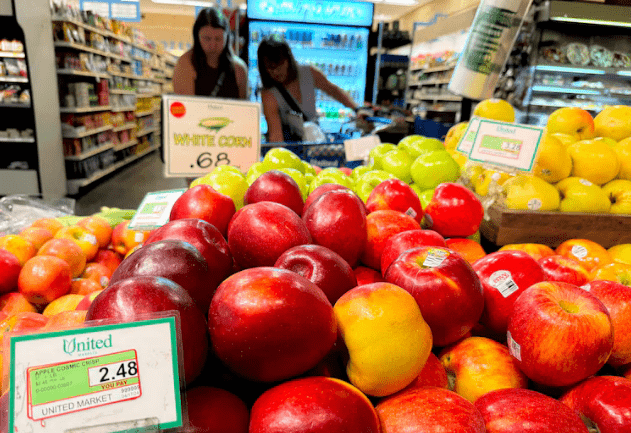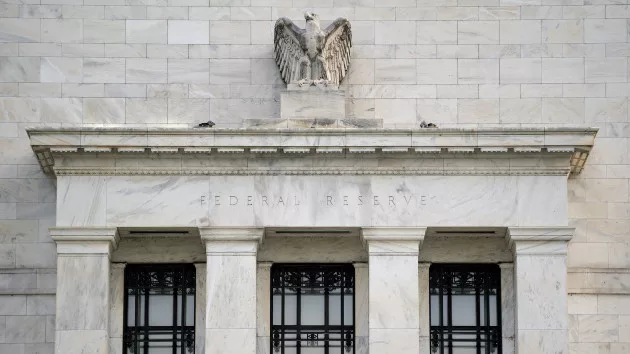
(WASHINGTON) — The Biden administration announced this week that it is releasing 1 million barrels of gasoline from a Northeast reserve in an effort to reduce prices when drivers hit the road this summer.
The gasoline will be sold in 100,000-barrel tranches over a six-week stretch between Memorial Day and July 4, bolstering the nation’s fuel supply during the busiest driving season of the year, the U.S. Department of Energy said in a statement.
“The Biden-Harris Administration is laser focused on lowering prices at the pump for American families,” Secretary of Energy Jennifer Granholm said.
However, experts who spoke to ABC News rejected the notion that the release of gasoline reserves would meaningfully lower prices at the pump. The move will likely result in a modest reduction for drivers in the mid-Atlantic and Northeast but will have little effect nationwide, they said.
“This is not a needle-mover,” Patrick de Haan, the head of petroleum analysis at GasBuddy, told ABC News. “It will not impact prices for the majority of Americans.”
The White House did not immediately respond to ABC News’ request for comment.
Since the beginning of the year, the average national price for a gallon of unleaded regular gas has jumped about 16%, amounting to an increase of more than 50 cents per gallon, according to AAA data shared with ABC News.
The national average price for a gallon of unleaded regular stands at $3.61, which marks a slight uptick from where the price stood a year ago, AAA data showed.
The move by the Biden administration will lower gasoline prices for drivers in the mid-Atlantic and Northeast by 5 to 15 cents, de Haan said, characterizing the release as a relatively small injection of additional supply.
The release of 1 million barrels, or 42 million gallons, is roughly equivalent to the amount of gasoline consumed by the U.S. every two-and-a-half hours, de Haan said.
Price increases so far this year match the typical bounce in spring when warm-weather travelers drive up demand and refineries switch to a more expensive blend of summer fuel.
By adding gasoline to the marketplace at this time of year, the Biden administration aims to mitigate the risk of further price increases as even more drivers travel over the coming months, experts told ABC News.
“It’s a perfect time of year for this release,” Timothy Fitzgerald, a professor of business economics at Texas Tech University who studies the petroleum industry, told ABC News.
Still, Fitzgerald added, the ultimate price effect of the move will be modest, in part because the added supply will not make its way to regions like the West Coast where drivers are suffering the highest prices.
In California, the state with the nation’s stiffest gasoline prices, an average gallon costs $5.15, according to AAA data. In nearby Washington, AAA said, an average gallon runs $4.58.
“This gasoline [release] is unlikely to help in those markets,” Fitzgerald said, pointing to a lack of pipeline capacity necessary to transport gasoline from the Northeast to the West.
The Northeast Gasoline Supply Reserve was established in the mid-2010s in the aftermath of Superstorm Sandy when refinery damage left some New York gas stations without fuel for 30 days, the Department of Energy said.
The decision to empty gasoline from the reserve comes after Congress called for the closure of the facility as part of a spending measure enacted in March.
In a statement this week, White House Press Secretary Karine Jean-Pierre said the move makes up part of the Biden administration’s effort to lower energy prices for American consumers.
“This builds on other actions by President Biden to lower gas and energy costs — including historic releases from the Strategic Petroleum Reserve and the largest-ever investment in clean energy,” Jean-Pierre said.
Despite the rise in gasoline prices, U.S. oil production has surged in recent years.
The U.S. set a record for crude oil production in 2023, averaging 12.9 million barrels per day, according to the U.S. Energy Information Administration, a federal agency.
Rising gas prices can hurt perceptions of an incumbent president and damage the prospects for reelection, experts previously told ABC News.
In 2016, a study in the academic journal, Political Psychology examined the relationship between gas prices and presidential approval rating between the mid-1970s and mid-2000s, finding that elevated gas prices drove a president’s approval downward.
To be exact, each 10-cent increase in the gas price was associated with more than half a percentage point decline in presidential approval, the research showed.
Copyright © 2024, ABC Audio. All rights reserved.





